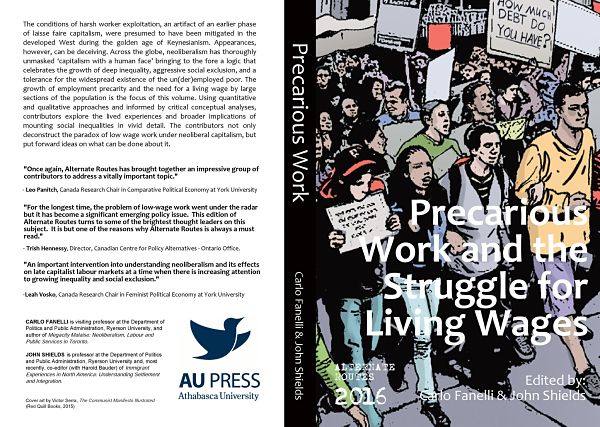The Precarity Penalty: How Insecure Employment Disadvantages Workers and Their Families
Abstract
This paper examines the social and economic effects of
precarious employment in the Greater Toronto-Hamilton area. The
analysis is based on data from two surveys conducted in 2011 and in 2014
by the Poverty and Employment Precarity in Southern Ontario (PEPSO)
research group. The survey findings paint a picture of how low earnings
and economic uncertainty translate into delayed formation of
relationships, lower marriage rates for workers under the age of 35, and
fewer households with children. They also suggest that workers in
precarious employment are more likely to experience social isolation.
These findings suggest that the Precarity Penalty is not limited to
economic outcomes from employment but also includes disadvantages in
establishing healthy households and being engaged in one's community.
Workers in secure employment enjoy better economic outcomes from
employment that provide the basis for better household wellbeing and
increased social integration. While much has been made in recent years of
the unequal distribution of income, the PEPSO study also points to the
unequal distribution of many of the non-financial aspects of life that
people value including companionship, having a family and having friends.
Downloads
How to Cite
Issue
Section
License
Articles are published in Alternate Routes: A Journal of Critical Social Research under the Creative Commons "Attribution/Non-Commercial/No Derivative Works" Canada licence.
The copyright for the articles published in this journal is retained by the authors, with first publication rights granted to the journal. By virtue of their appearance in this open access journal, articles may be used, with proper attribution, in educational and other non-commercial, not-for-profit settings. The submission of a manuscript to Alternate Routes will be taken to mean that the author understands and agrees to the following:
- the manuscript represents original work not previously published;
- the manuscript is not being considered elsewhere for publication in the same language (publication elsewhere in an alternate language does not preclude acceptance of submission to Alternate Routes);
- appropriate written copyright permissions have been secured for republication of any copyrighted material contained in the manuscript;
- copyright for this article is retained by the author, with first publication rights granted to Alternate Routes;
- by virtue of its appearance in this open access journal, it is understood that the article is freely available for use, with proper attribution, for educational and other non-commercial purposes;
- reuse of the article for commercial purposes by anyone other than the author requires permission of the author;
- the author agrees to cite Alternate Routes as a source whenever h/she later republishes or reuses the article in other platforms.


